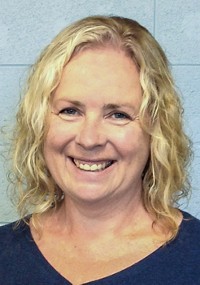Advertisement
Grab your lab coat. Let's get started
Welcome!
Welcome!
Create an account below to get 6 C&EN articles per month, receive newsletters and more - all free.
It seems this is your first time logging in online. Please enter the following information to continue.
As an ACS member you automatically get access to this site. All we need is few more details to create your reading experience.
Not you? Sign in with a different account.
Not you? Sign in with a different account.
ERROR 1
ERROR 1
ERROR 2
ERROR 2
ERROR 2
ERROR 2
ERROR 2
Password and Confirm password must match.
If you have an ACS member number, please enter it here so we can link this account to your membership. (optional)
ERROR 2
ACS values your privacy. By submitting your information, you are gaining access to C&EN and subscribing to our weekly newsletter. We use the information you provide to make your reading experience better, and we will never sell your data to third party members.
Environment
Rethinking Grant Programs At NSF
Chemistry Division realigns programs to capture how science is done
by Susan R. Morrissey
June 8, 2009
| A version of this story appeared in
Volume 87, Issue 23
Submitting a chemistry grant proposal to a federal agency such as the National Science Foundation often requires applicants to define their work within specific research categories that mirror the traditional subdisciplines of the field. For chemists who have been taking their work in more interdisciplinary directions, however, classifying their work in this way can present a challenge. After all, should a project involving both instrumentation development and small-molecule drug development be sent to an organic synthesis program or to an analytical program?
This problem has not gone unnoticed within NSF's Chemistry Division, which has spent the past year or so developing a new program structure that more closely represents the research being done in the field. The division will eliminate the traditional program categories and replace them with a new set of more interdisciplinary programs. The official transition to the new programs will happen in July.
"The Chemistry Division really followed through on what a significant group of the chemical community wanted," says Michael P. Doyle, professor and chairman of the chemistry department at the University of Maryland. "The Chemistry Division has done a great job of putting together something people can follow."
The new structure replaces the current programs of organic dynamics; organic synthesis; theory or computational; experimental physical; inorganic, bioinorganic, and organometallic; and analytical and surface with eight research areas. The realigned structure includes chemical synthesis; chemical structure, dynamics, and mechanisms; chemical measurement and imaging; theory, models, and computational methods; chemistry of life processes; macromolecular, supramolecular, or nanochemistry; environmental chemical sciences; and chemical catalysis. Integrative Chemistry Activities, which include programs such as the Centers for Chemical Innovation and the Research Experiences for Undergraduates, remain unchanged by this realignment.
"The goal of this realignment is to catch proposals in a better way," Chemistry Division Director Luis Echegoyen tells C&EN. To do this, he adds, "we have tried to take into consideration the interfaces between disciplines."
As Echegoyen points out, interdisciplinary research involving chemistry doesn't always fit well in the current structure. And although the division's program officers try to redirect grant applications to the program that they best fall under—whether that's within the Chemistry Division or elsewhere at NSF—these proposals can fall through the cracks. "We wanted to minimize the size of these cracks," Echegoyen says.
For example, that research proposal involving both instrumentation and small-molecule development—which doesn't fit well into the existing programs—would find a more natural home in the realigned chemistry of life sciences program.
Another instance of an area that will benefit from this change is computational chemistry. Under the current system, proposals in this area would go to the theory or computational program. But under the realigned programs, a project may fall into the theory, models, and computational methods program if it involves theory development, or the chemical measurement and imaging program if it focuses on instrument development or data analysis. The project could even fall into the environmental chemical sciences program if its focus is on environmental data analysis. From the program manager's perspective, this means that incoming proposals can be better grouped with others of its kind, and that should lead to better evaluations.
The idea to make a change to the division's structure has been floating around the chemical community for years, Echegoyen notes. The push to finally make it happen, however, came more recently when a pair of external division review groups recommended the division review its structure.
In 2004 and 2007, panels of external scientists known as the Committee of Visitors, "both said that we should seriously consider looking at the structure because it is archaic," Echegoyen explains. These committees both pointed out that the division's structure reflects the way chemistry is taught, not necessarily the way it is done.
In response to these committees' recommendations, the division started the hard work that led to the change in program structure. After collecting input from the community, including comments from a survey of chemistry department chairs by Doyle, the division finalized its realigned programs.
"The realignment in NSF does erase some artificial divisions between areas of chemistry and is a move toward redefining aspects of modern chemistry," says Ronald Breslow, a chemistry professor at Columbia University.
"However, it raises challenges that need to be successfully addressed," Breslow says. "The chief one is getting program managers who can handle broad areas of chemistry with expertise."
Echegoyen agrees. The new program structure creates "a very serious challenge for us internally," he says. Unlike in the current system where there is a theoretical chemistry guru or a synthetic organic chemistry guru within the division, the realignment will require individual staff members to have knowledge across several traditional areas.
For instance, the new chemical structure, dynamics, and mechanisms program will capture grants from all of the existing programs. And that means that program officers in this new category must have an exceptionally broad knowledge base.
The shift into the realigned structure, however, will not translate into wholesale personnel changes, Echegoyen says. "We have to use the staff we have to support the new structure," he notes. "But in the future we are going to look for people who specifically fit into the new structure," such as a "card-carrying" environmental chemist.
But even before this realignment was finalized, Echegoyen was making staffing decisions to position the divisions to handle interdisciplinary proposals. He created and filled program director posts that are shared between divisions and directorates within NSF. As an example, he points to a year-old position that straddles the Chemistry Division and the Molecular & Cellular Biosciences Division of the Biological Sciences Directorate and a just-created position between the Divisions of Chemistry and Materials Research within the Mathematical & Physical Sciences Directorate.
"If every division within NSF is able to do the same by appointing shared program directors between the divisions they do their closest business with, then you would have a very tightly knit system within the foundation that would make it more difficult for a proposal to fall through the cracks," Echegoyen says.
Concerns such as those relating to internal staffing at NSF were voiced in the anonymous responses UMD's Doyle received to his survey of chemistry department chairs. But the survey, which was designed to see whether the academic chemistry community thought it was time for a realignment of programs within NSF's Chemistry Division, also yielded responses showing support for change.
"The results were what you'd expect in an academic department," Doyle says. "About half of the respondents said change was important and about half didn't want NSF to do anything."
One respondent captured both the good and bad aspects of the realignment: "I can see all the downsides of organizing things in [the way proposed by the Chemistry Division]: an outcry that Chemistry is abandoning 'fundamental' research, complaints that some important area would fall through the cracks, and—from a practical point of view—the staff reorganization," the respondent wrote. On the upside, he continued, "it would be a more modern way of defining chemistry, and it would reflect more accurately the way most [principal investigators, or PIs,] conceptualize their research."
The writer goes on to point out that "chemical research, at least most of the interesting chemical research, is increasingly defined and motivated in terms of a practical problem that the research seeks to solve or address." For this reason, redefining programs makes sense, the writer indicated.
But defining research in terms of current problems led another responding chairman to wonder whether the realigned programs would have long-term relevance. "The overwhelming sense of the faculty [in my department] is that the current structure should be preserved. There was specific concern that overspecialization and differentiation of the categories could have the negative effect of diverting resources into areas currently in favor (often for nonscientific reasons) instead of relying on the creativity of PIs to follow their scientific instincts," the chairman wrote.
Echegoyen does not agree with the idea that the realignment will change the way PIs write their grant proposals or the way they think about chemistry. "Proposals are not going to be written based on what components are going to be in consideration for a particular program," he says, adding, PIs "are going to write their science grants the way they normally do."
The Chemistry Division director doesn't believe that the realignment will "drive the community to change the way they do chemistry." Instead, he says, "it's really just going to drive us to evaluate proposals in a very multidisciplinary environment."
DECISION TREE
To help the chemical community figure out where grant proposals belong in the realigned structure, NSF's Chemistry Division has developed this flow chart. Researchers start by deciding if the research in their grant is experimental or theoretical. Based on their response, they follow the appropriate arrow to another box. This process continues until a positive response leads to a teal box, which has the name of one of the eight new programs in it. The largest programs, including chemical synthesis, are toward the bottom of the chart to help direct projects that have other components to them to more specific programs. This is intended to help avoid overwhelming any one program.





Join the conversation
Contact the reporter
Submit a Letter to the Editor for publication
Engage with us on Twitter